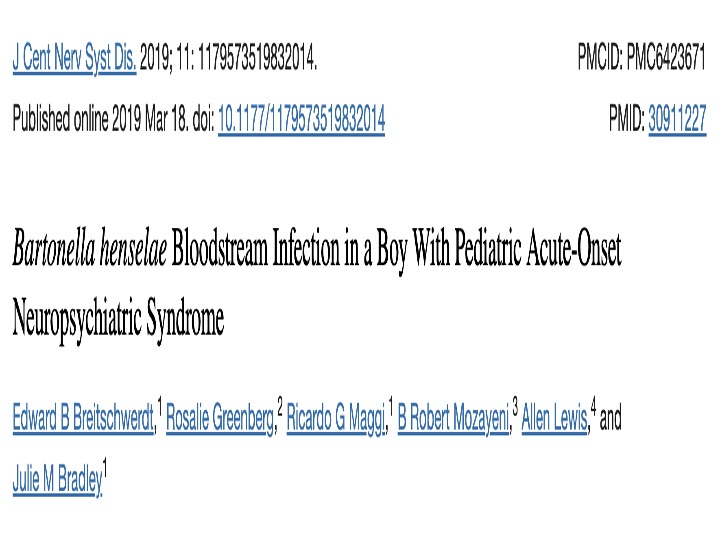Common Tick-Borne Diseases - Signs and Symptoms
Aug 29, 2023
Vector-borne diseases, human illnesses transmitted by other living, non-human organisms, account for 700,000 deaths worldwide every year. They make up about 17 percent of all infectious diseases.
Along with mosquitos and biting Tsetse flies, ticks pose one of the greatest threats for transmitting bacteria and parasites that can cause illnesses. There are dozens of tick-borne diseases that many people are unaware of.
Below are the most prominent tick-borne illnesses. Keep reading to find out how they are transmitted and what you can do to avoid them.
Lyme Disease and Co-infections
Lyme disease is the most prevalent vector-borne infection in the United States, with upwards of 476,000 cases every year and this is likely a gross underestimation. Acute symptoms of Lyme disease, specifically Borrelia species, include fever, headache, and extreme fatigue.
Lyme disease caused by Borrelia can be accompanied by a skin rash, however, it may occur in as little as 20% of children with tick-borne infections. Since the rash is less likely in children, the biggest concern is with missed disease or undertreated disease. If untreated, it can become chronic with inflammation involving the joints, multiple organs, and the nervous system. Symptoms of more chronic Borrelia infections can include:
- Neck pain
- Joint pain
- Nerve pain
- Peripheral neuropathy
- Vertigo
- Headaches
- Cardiac symptoms
- Brain Fog
- Anxiety and Depression
- Cognitive Impairments
Anaplasmosis
Anaplasmosis is another very common tick-borne illness. It was first detected in humans in 1990.
It is transmitted to humans by black-legged ticks, also known as deer ticks, which are the same ones that carry Lyme disease. Anaplasmosis often entails fever, severe headache, chills, muscle aches, and sometimes nausea and vomiting.
Babesiosis
- Babesiosis is a disease caused by a protozoan infection. It often accompanies Lyme disease. Cases of babesiosis have increased significantly in Connecticut, Maine, Massachusetts, New Hampshire, New Jersey, New York, Rhode Island and Vermont.
- This is only counting B. microti cases. The dominant Babesia sp. in deer ticks is B. odocoilei and it's infecting humans at a much, much higher rate than B. microti.
- B. odocoilei is much more sophisticated parasite and does not cause the typical acute babesiosis syndrome but produces chronic babesiosis with variable levels and kinds of symptomatology. https://www.cdc.gov/mmwr/volumes/72/wr/mm7211a1.htm?s_cid=mm7211a1_w
Often, people do not know they have Babesiosis, especially if they have not noticed a tick bite, because the parasites that carry it are microscopic. Babesiosis can be life-threatening, and symptoms include fever, chills, body aches, nausea, and fatigue.
When Babesiosis becomes chronic, symptoms can include:
- Unrelenting headache (especially head pressure)
- Paresthesias and dysautonomia
- Night sweats
- Rib and bone pain
- Cough and Air Hunger
- Encephalopathy, anxiety
- Myalgias and arthralgias
- Brain fog, depression, insomnia
- Gastrointestinal symptoms
Bartonella
Bartonella also often accompanies other forms of Lyme disease. In our Northeast practice, 42% of children with PAIS or PANS also have Bartonella. As initial testing often misses Bartonella infection, the symptoms can often become chronic and include:
- Muscle and Joint pains
- Headaches
- Fatigue & Brain Fog
- Impaired executive function
- Slow processing speed
- Migratory neuropathy
- Migratory fasciculations
- Rage and Aggression
- Constant and daily “flare”
- Anxiety, depression, OCD
- Foot/heel pain
- Striae/Stretch marks
- Do not follow dermal lines
- Blanch
Ehrlichiosis
Ehrlichiosis is most common in the Southern United States. It is caused by a bacterial infection transmitted by black-legged and lone star ticks. Fever, headaches, fatigue, and muscle aches often accompany the illness.
Powassan Virus
The Powassan virus is a serious health condition spread by deer ticks, groundhog ticks, and squirrel ticks. It is most prevalent in the Northeastern and Midwestern United States.
Powassan virus symptoms include headache, fever, weakness, and vomiting. In severe cases, it can cause seizures and swelling of the brain.
Rocky Mountain Spotted Fever
Many people have heard of Rocky Mountain Spotted Fever (RMSF). At one time, it was one of the most prominent tick-borne diseases. RMSF is transmitted by the dog tick, the brown dog tick, and the Rocky Mountain wood tick.
Acute symptoms of RMSF include fever, headache, and fatigue. A rash can also accompany it. In more severe cases, it can also cause organ damage and some neurological problems.
Learn More About Tick-Borne Diseases
Now that you understand the most common tick-borne diseases and their symptoms, you can take steps to prevent them. With a little planning and vigilance, you and your family can avoid tick bites, minimizing the potential transmission of these diseases.
Dr. Nancy O'Hara is a board-certified pediatrician who specializes in treating PANS and PANDAS, as well as other neurodevelopmental disorders. We treat patients directly and offer a mentoring program for physicians and caregivers. Reach out to us today to learn more.
CITATIONS





